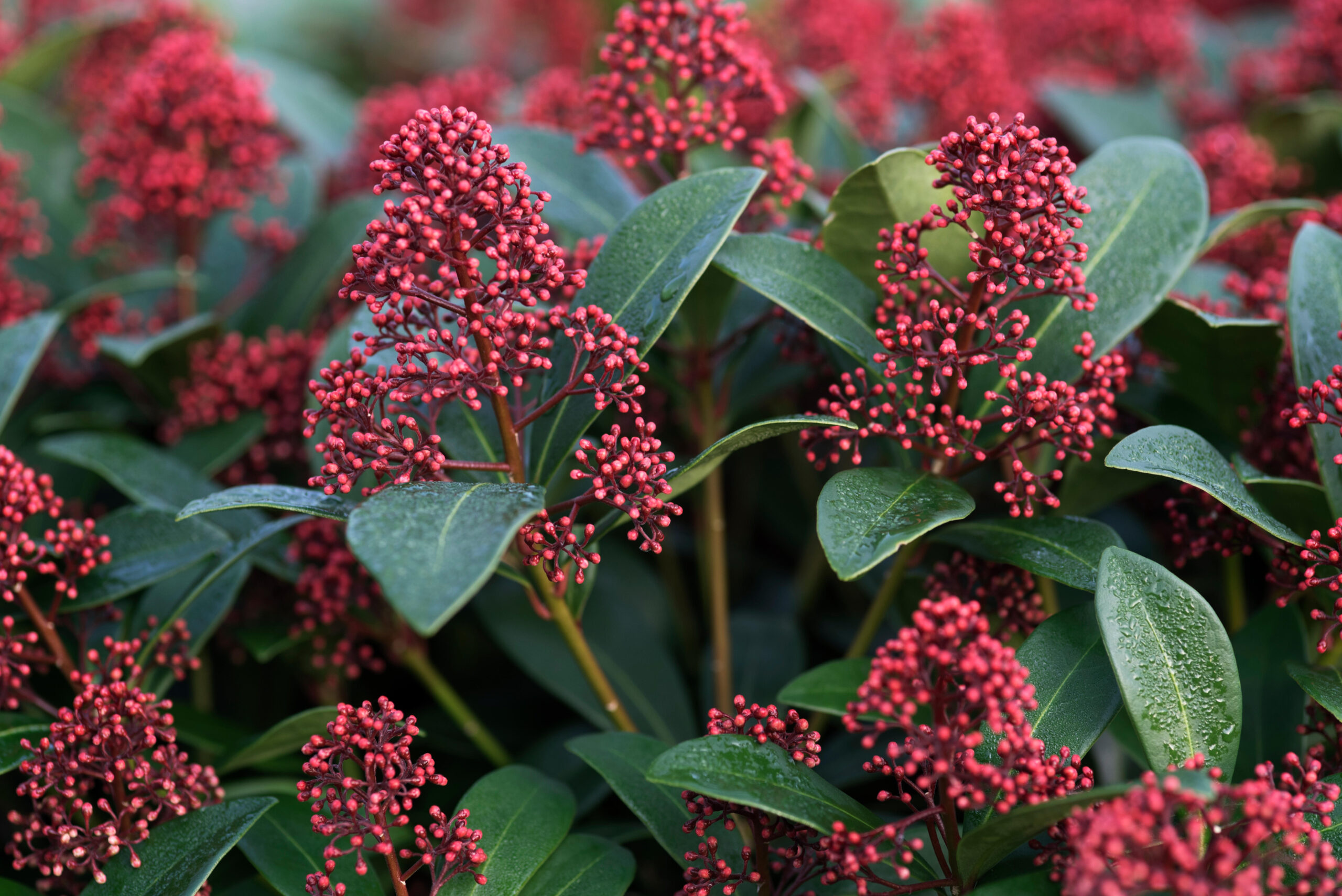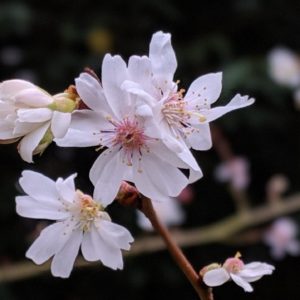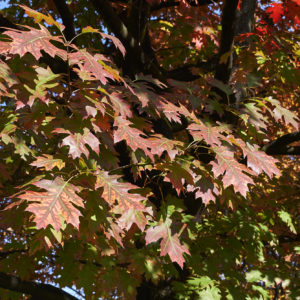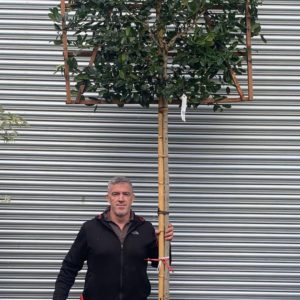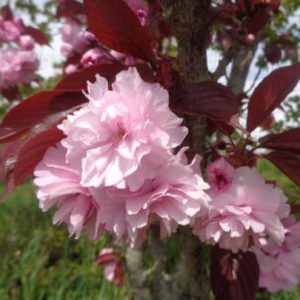Skimmia Jap. Rubella
€45.00
Description
Quick Facts
- Common Name: Japanese Skimmia, Red Bud Skimmia
- Botanical Name: Skimmia japonica ‘Rubella’
- Plant Type: Evergreen shrub
- Mature Height: 1-1.5m
- Mature Spread: 1-1.5m
- Flowering Period: March to April
- Flower Colour: White flowers from deep red buds
- Foliage: Dark green, glossy, aromatic leaves with red edges in winter
- Hardiness: RHS H5 (fully hardy)
- Soil Requirements: Moist, well-drained, acidic to neutral
- Aspect: Partial to full shade
- Maintenance: Low
Description
Discover the captivating beauty of Skimmia japonica ‘Rubella’, an award-winning evergreen that brings months of winter drama and spring fragrance to shaded Irish gardens. This exceptional male cultivar offers an unparalleled display of colour and interest, transforming the darkest months into a celebration of rich burgundy tones before erupting into clouds of sweetly scented white blooms that herald spring’s arrival.
From autumn through winter, this magnificent shrub becomes adorned with large clusters of deep red flower buds that create a striking architectural display against glossy dark green foliage edged with ruby-red tones. As spring unfolds, these jewel-like buds open into panicles of fragrant white flowers that fill shaded corners with their sweet perfume. The compact, rounded habit and lustrous evergreen leaves provide elegant structure throughout every season, making this a true four-season performer.
Named for its distinctive ruby-red buds that bring warmth to winter gardens, ‘Rubella’ has earned the prestigious RHS Award of Garden Merit for its outstanding performance and reliability. Perfectly adapted to Irish conditions, this hardy treasure thrives in our naturally acidic soils and shaded spaces, asking for little care yet rewarding gardeners with months of colour when gardens need it most.
Create enchanting winter combinations by pairing this dramatic beauty with snowdrops, hellebores, and winter-flowering heathers for layered seasonal interest, or combine with other shade-loving companions such as ferns, hostas, and Japanese maples. Magnificent in containers flanking doorways where its winter colour and spring fragrance can be fully appreciated, or massed in woodland gardens where its architectural presence will bring year-round beauty to your Irish garden sanctuary.
Caragh Garden Notebook
Planting: Space plants 1-1.5m apart in partial to full shade. Plant in spring or autumn in moist, well-drained, acidic to neutral soil. Dig holes twice the width of the root ball and incorporate ericaceous compost or well-rotted leaf mould. Water thoroughly after planting and mulch with bark chips or pine needles to maintain acidity and moisture.
Soil Preparation: Requires acidic to neutral soil with pH 5.5-7.0. Thrives in humus-rich, moisture-retentive conditions. Avoid alkaline or chalky soils which cause chlorosis (yellowing leaves). In neutral soils, incorporate generous amounts of ericaceous compost and mulch annually with acidic materials. Ensure good drainage whilst maintaining consistent moisture levels.
Container Growing: Excellent for containers using quality ericaceous compost. Choose pots minimum 40cm diameter with adequate drainage holes. Water regularly with rainwater where possible to avoid alkaline tap water. Feed monthly during growing season with ericaceous fertiliser. Repot every 2-3 years in spring using fresh ericaceous compost.
Seasonal Care: Minimal pruning required – simply remove any dead, damaged, or wayward branches after flowering in late spring. Avoid heavy pruning as this can reduce next year’s bud display. Apply slow-release ericaceous fertiliser in early spring. Mulch annually with bark chips, pine needles, or leaf mould to maintain soil acidity and suppress weeds. Water during prolonged dry spells.
Propagation: Take semi-hardwood cuttings in late summer using hormone rooting powder. Root in ericaceous compost with consistent humidity and bottom heat if possible. Rooting typically takes 8-12 weeks. Alternatively, layer low-growing branches in spring. Note: As a male cultivar, ‘Rubella’ does not produce berries but provides excellent pollen for female varieties.

